Trajan's Forum (Latin: Forum Traiani; Italian: Foro di
Traiano) was the last of the Imperial fora to be constructed in ancient Rome.
The architect Apollodorus of Damascus oversaw its construction. This forum was
built on the order of the emperor Trajan with the spoils of war from the
conquest of Dacia, which ended in 106. The Fasti Ostienses state that the Forum
was inaugurated in 112, while Trajan's Column was erected and then inaugurated
in 113. To build this monumental complex, extensive excavations were required:
workers eliminated the sides of the Quirinal and Capitoline (Campidoglio)
Hills, which closed the valley occupied by the Imperial forums toward the
Campus Martius. It is possible that the excavations were initiated under
Emperor Domitian, while the project of the Forum was completely attributed to
the architect Apollodorus of Damascus, who also accompanied Emperor Trajan in
the Dacian campaign. During the time of the construction, several other
projects took place: the construction of the Markets of Trajan, and the
renovation of the Caesar's Forum (where the Basilica Argentaria was built) and
the Temple of Venus Genetrix. The Forum consisted of a vast portico-lined
piazza measuring 300 metres (980 feet) long and 185 metres (607 feet) wide
exedrae on two sides. The main entrance to the forum lay on the southern side,
via a triumphal arch surmounted by a statue of Trajan in a six-horse chariot.
The Basilica Ulpia lies at the north end of the piazza, which was cobbled with
rectangular blocks of white marble and decorated by a large equestrian statue
of Trajan. On either side of the piazza are markets, also housed by the exedrae.
North of the Basilica was a smaller piazza, with a temple dedicated to the
deified Trajan on the far north side facing inwards. The position of - and very
existence of - the temple dedicated to the deified Trajan is a matter of hotly
contested debate among archaeologists, particularly clear in the ongoing debate
between James E. Packer and Roberto Meneghini.[2] Directly north of the
Basilica Ulpia on either side of the forum were two libraries, one housing
Latin documents and the other Greek documents. Between the libraries stood the
38-metre (125-foot) Trajan's Column.
The Forum of Caesar (Italian: Foro di Cesare), also known as
Forum Iulium or Forum Julium, Forum Caesaris, is a forum (or plaza) built by
Julius Caesar near the Forum Romanum in Rome in 46 BC. Caesar decided to
construct a forum bearing his name in the northeast section of the Forum
Romanum, of which he purchased a very expensive, select amount of parcels of
land in that area. Forum construction began in 54 BC, and it was dedicated to
Caesar and his deeds in 46 BC upon completion. Some scholars, however, believe
that Augustus furnished the west side with the shops and offices that were
considered part of the Forum of Caesar, therefore being the one to see its
completion. The Forum spanned from the Argiletum on the southeast side of the
Forum Romanum to the Atrium Libertatis and spanned 160 meters by 75 meters. As
part of the dedication, lavish games were offered and funded by Caesar,
indicating the staggering cost and thus the personal interest that Caesar had
invested in the project. The Forum of Caesar originally meant an expansion of
the Forum Romanum. The Forum, however, evolved so that it served two additional
purposes. As Caesar became more and more involved in this project, the Forum
became a place for public business that was related to the Senate in addition
to a shrine for Caesar himself as well as Venus Genetrix. Before his
assassination, Caesar would have the Senate meet him before his temple, an act
deemed very unpopular by the Senate. The Forum of Caesar also had an effect on
the Curia, which Caesar began to reconstruct in 44 BC. This reconstruction
moved the Forum of Caesar much closer to the Curia. The ten tabernae located on
the western side of the Forum and its now close approximation to the Senate
house symbolized the unity that Caesar felt between himself and the Senate. Caesar
also placed a statue of his favourite horse in front of the temple. Following
his assassination, a statue of Caesar riding this horse was added. Caesar (gens
Julia) claimed descent from Venus through his ancestor Julus. The Temple of
Venus Genetrix was completed after Caesar's assassination by Roman senators,
which included lavish games in reference to Caesar's original dedication to the
Forum. Caesar had plans for this temple well in advance, having dedicated the
construction of a temple to Venus Victrix at the climactic Battle of Pharsalus
in 48 BC, though never being able to see its completion. This original
dedication was done because it was Pompey's favourite goddess, and Caesar hoped
to gain the goddess's favour before the battle against Pompey. The temple was
re-built after the removal of the gap between the Capitoline Hill and the
Quirinal Hill, under the reigns of Domitian and Trajan; during the adaptation
of the gap, a second floor of tabernae was created behind the west portico of
the square and a building with pillars made of tuff blocks, named Basilica
Argentaria, was erected. The new temple was inaugurated in the same day as the
Trajan's Column, on May 12, 113, as attested by an inscription in the Fasti
Ostienses.
The Roman Forum (Latin: Forum Romanum; Italian: Foro Romano)
is a rectangular forum (plaza) surrounded by the ruins of several important
ancient government buildings at the center of the city of Rome. Citizens of the
ancient city referred to this space, originally a marketplace, as the Forum
Magnum, or simply the Forum. It was for centuries the center of Roman public
life: the site of triumphal processions and elections; the venue for public
speeches, criminal trials, and gladiatorial matches; and the nucleus of
commercial affairs. Here statues and monuments commemorated the city's great
men. The teeming heart of ancient Rome, it has been called the most celebrated
meeting place in the world, and in all history. Located in the small valley
between the Palatine and Capitoline Hills, the Forum today is a sprawling ruin
of architectural fragments and intermittent archaeological excavations
attracting 4.5 million sightseers yearly. Many of the oldest and most important
structures of the ancient city were located on or near the Forum. The Roman
Kingdom's earliest shrines and temples were located on the southeastern edge.
These included the ancient former royal residence, the Regia (8th century BC),
and the Temple of Vesta (7th century BC), as well as the surrounding complex of
the Vestal Virgins, all of which were rebuilt after the rise of imperial Rome. Other
archaic shrines to the northwest, such as the Umbilicus Urbis and the Vulcanal
(Shrine of Vulcan), developed into the Republic's formal Comitium (assembly
area). This is where the Senate—as well as Republican government itself—began.
The Senate House, government offices, tribunals, temples, memorials and statues
gradually cluttered the area. Over time the archaic Comitium was replaced by
the larger adjacent Forum and the focus of judicial activity moved to the new
Basilica Aemilia (179 BC). Some 130 years later, Julius Caesar built the
Basilica Julia, along with the new Curia Julia, refocusing both the judicial
offices and the Senate itself. This new Forum, in what proved to be its final
form, then served as a revitalized city square where the people of Rome could
gather for commercial, political, judicial and religious pursuits in ever
greater numbers. Eventually much economic and judicial business would transfer
away from the Forum Romanum to the larger and more extravagant structures
(Trajan's Forum and the Basilica Ulpia) to the north. The reign of Constantine
the Great saw the construction of the last major expansion of the Forum
complex—the Basilica of Maxentius (312 AD). This returned the political center
to the Forum until the fall of the Western Roman Empire almost two centuries
later.
The Colosseum or Coliseum (/kɒləˈsiːəm/ kol-ə-SEE-əm), also
known as the Flavian Amphitheatre (Latin: Amphitheatrum Flavium; Italian:
Anfiteatro Flavio [aŋfiteˈaːtro ˈflaːvjo] or Colosseo [kolosˈsɛːo]), is an oval
amphitheatre in the centre of the city of Rome, Italy. Built of concrete and
sand,it is the largest amphitheatre ever built. The Colosseum is situated just
east of the Roman Forum. Construction began under the emperor Vespasian in AD
72, and was completed in AD 80 under his successor and heir Titus. Further
modifications were made during the reign of Domitian (81–96). These three
emperors are known as the Flavian dynasty, and the amphitheatre was named in
Latin for its association with their family name (Flavius). The Colosseum could
hold, it is estimated, between 50,000 and 80,000 spectators, having an average
audience of some 65,000;[7][8] it was used for gladiatorial contests and public
spectacles such as mock sea battles (for only a short time as the hypogeum was
soon filled in with mechanisms to support the other activities), animal hunts,
executions, re-enactments of famous battles, and dramas based on Classical
mythology. The building ceased to be used for entertainment in the early
medieval era. It was later reused for such purposes as housing, workshops,
quarters for a religious order, a fortress, a quarry, and a Christian shrine. The
site chosen was a flat area on the floor of a low valley between the Caelian,
Esquiline and Palatine Hills, through which a canalised stream ran. By the 2nd
century BC the area was densely inhabited. It was devastated by the Great Fire
of Rome in AD 64, following which Nero seized much of the area to add to his
personal domain. He built the grandiose Domus Aurea on the site, in front of
which he created an artificial lake surrounded by pavilions, gardens and
porticoes. The existing Aqua Claudia aqueduct was extended to supply water to
the area and the gigantic bronze Colossus of Nero was set up nearby at the entrance
to the Domus Aurea. Although the Colossus was preserved, much of the Domus
Aurea was torn down. The lake was filled in and the land reused as the location
for the new Flavian Amphitheatre. Gladiatorial schools and other support
buildings were constructed nearby within the former grounds of the Domus Aurea.
Vespasian's decision to build the Colosseum on the site of Nero's lake can be
seen as a populist gesture of returning to the people an area of the city which
Nero had appropriated for his own use. In contrast to many other amphitheatres,
which were located on the outskirts of a city, the Colosseum was constructed in
the city centre; in effect, placing it both symbolically and precisely at the
heart of Rome. Construction was funded by the opulent spoils taken from the
Jewish Temple after the Great Jewish Revolt in 70 AD led to the Siege of Jerusalem.
According to a reconstructed inscription found on the site, "the emperor
Vespasian ordered this new amphitheatre to be erected from his general's share
of the booty." Along with the spoils, estimated 100,000 Jewish prisoners
were brought back to Rome after the war, and many contributed to the massive
workforce needed for construction. The slaves undertook manual labor such as
working in the quarries at Tivoli where the travertine was quarried, along with
lifting and transporting the quarried stones 20 miles from Tivoli to Rome.
Along with this free source of unskilled labor, teams of professional Roman
builders, engineers, artists, painters and decorators undertook the more
specialized tasks necessary for building the Colosseum. Construction of the
Colosseum began under the rule of Vespasian in around 70–72 AD (73-75 AD
according to some sources). The Colosseum had been completed up to the third
story by the time of Vespasian's death in 79. The top level was finished by his
son, Titus, in 80, and the inaugural games were held in A.D. 80 or 81. Dio
Cassius recounts that over 9,000 wild animals were killed during the inaugural
games of the amphitheatre. Commemorative coinage was issued celebrating the
inauguration. The building was remodelled further under Vespasian's younger
son, the newly designated Emperor Domitian, who constructed the hypogeum, a
series of underground tunnels used to house animals and slaves. He also added a
gallery to the top of the Colosseum to increase its seating capacity. In 217,
the Colosseum was badly damaged by a major fire (caused by lightning, according
to Dio Cassius[19]) which destroyed the wooden upper levels of the
amphitheatre's interior. It was not fully repaired until about 240 and
underwent further repairs in 250 or 252 and again in 320. Gladiatorial fights
are last mentioned around 435. An inscription records the restoration of
various parts of the Colosseum under Theodosius II and Valentinian III (reigned
425–455), possibly to repair damage caused by a major earthquake in 443; more
work followed in 484 and 508. The arena continued to be used for contests well
into the 6th century. Animal hunts continued until at least 523, when Anicius
Maximus celebrated his consulship with some venationes, criticised by King
Theodoric the Great for their high cost.
The Pantheon (/ˈpænθiən/ or US: /ˈpænθiɒn/; Latin: Pantheon,
from Greek Πάνθειον Pantheion meaning "[temple] of every god") is a
former Roman temple, now a church, in Rome, Italy, on the site of an earlier
temple commissioned by Marcus Agrippa during the reign of Augustus (27 BC – 14
AD). The present building was completed by the emperor Hadrian and probably
dedicated about 126 AD. He retained Agrippa's original inscription, which has
confused its date of construction as the original Pantheon burnt down so it is
not certain when the present one was built. The building is circular with a
portico of large granite Corinthian columns (eight in the first rank and two
groups of four behind) under a pediment. A rectangular vestibule links the
porch to the rotunda, which is under a coffered concrete dome, with a central
opening (oculus) to the sky. Almost two thousand years after it was built, the
Pantheon's dome is still the world's largest unreinforced concrete dome. The
height to the oculus and the diameter of the interior circle are the same, 142
feet (43 m). It is one of the best-preserved of all Ancient Roman buildings, in
large part because it has been in continuous use throughout its history, and
since the 7th century, the Pantheon has been used as a church dedicated to
"St. Mary and the Martyrs" (Latin: Santa Maria ad Martyres) but
informally known as "Santa Maria Rotonda". The square in front of the
Pantheon is called Piazza della Rotonda. The Pantheon is a state property,
ruled by Italy's Ministry of Cultural Heritage and Activities and Tourism
through the Polo Museale del Lazio; in 2013 it was visited by over 6 million
people. The Pantheon's large circular domed cella, with a conventional temple
portico front, was unique in Roman architecture. Nevertheless, it became a
standard exemplar when classical styles were revived, and has been copied many
times by later architects.
The Palatine Hill (/ˈpælətaɪn/; Latin: Collis Palatium or
Mons Palatinus; Italian: Palatino [palaˈtiːno]) is the centremost of the Seven
Hills of Rome and is one of the most ancient parts of the city. It stands 40
metres above the Roman Forum, looking down upon it on one side, and upon the
Circus Maximus on the other. According to Roman mythology, the Palatine Hill
was the location of the cave, known as the Lupercal, where Romulus and Remus
were found by the she-wolf Lupa that kept them alive. Another legend occurring
on the Palatine is Hercules' defeat of Cacus after the monster had stolen some
cattle. Hercules struck Cacus with his characteristic club so hard that it
formed a cleft on the southeast corner of the hill, where later a staircase
bearing the name of Cacus was constructed. Rome has its origins on the
Palatine. Excavations show that people have lived in the area since the 10th
century BC. According to Livy, after the immigration of the Sabines and the
Albans to Rome, the original Romans lived on the Palatine.The Palatine Hill was
also the site of the ancient festival of the Lupercalia. Many affluent Romans
of the Republican period (c.509 BC – 44 BC) had their residences there. From
the start of the Empire (27 BC) Augustus built his palace there and the hill
gradually became the exclusive domain of emperors; the ruins of the palaces of
at least Augustus (27 BC – 14 AD), Tiberius (14 – 37 AD) and Domitian (81 – 96
AD) can still be seen. Augustus also built a temple to Apollo here. The great
fire of 64 AD destroyed Nero's palace, but he replaced it by 69 AD with the
even larger Domus Aurea over which was built Domitian's Palace. The Palatine
Hill is an archaeological site open to the public. The Palace of Domitian which
dominates the site and looks out over the Circus Maximus was rebuilt largely
during the reign of Domitian over earlier buildings of Nero. Later emperors
particularly the Severans made significant additions to the buildings.
The Capitoline Hill (/ˈkæpᵻtəˌlaɪn, kəˈpɪ-/; Latin: Collis
Capitōlīnus [ˈkɔllɪs kapɪtoːˈliːnʊs]; Italian: Campidoglio [kampiˈdɔʎʎo]),
between the Forum and the Campus Martius, is one of the Seven Hills of Rome. The
hill was earlier known as Mons Saturnius, dedicated to the god Saturn. The word
Capitolium first meant the temple of Jupiter Optimus Maximus later built here,
and afterwards it was used for the whole hill (and even other temples of
Jupiter on other hills), thus Mons Capitolinus (the adjective noun of
Capitolium). Ancient sources refer the name to caput ("head",
"summit") and the tale was that, when laying the foundations for the
temple, the head of a man was found. Some sources even saying it was the head
of some Tolus or Olus. The Capitolium was regarded by the Romans as
indestructible, and was adopted as a symbol of eternity. By the 16th century,
Capitolinus had become Capitolino in Italian, and Capitolium Campidoglio. The
Capitoline Hill contains few ancient ground-level ruins, as they are almost
entirely covered up by Medieval and Renaissance palaces (now housing the
Capitoline Museums) that surround a piazza, a significant urban plan designed
by Michelangelo. Influenced by Roman architecture and Roman republican times,
the word Capitolium still lives in the English word capitol. The Capitol Hill
in Washington, D.C. is widely assumed to be named after the Capitoline Hill, but
the relation is not clear.

































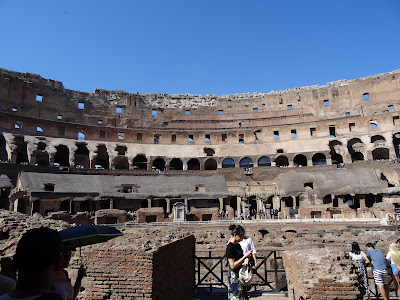








































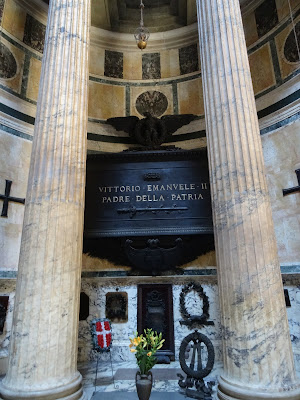





































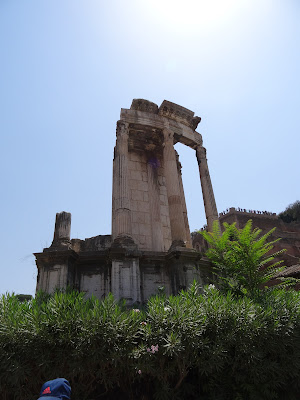

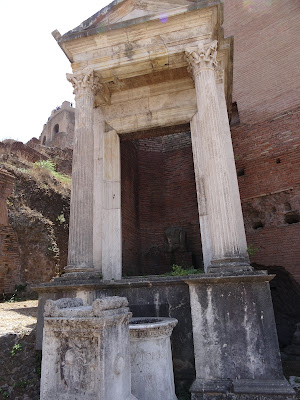


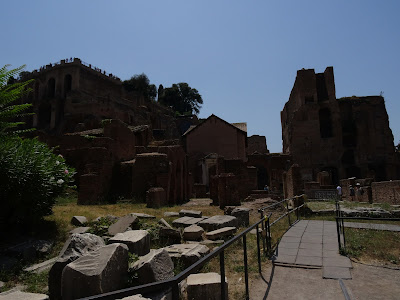



























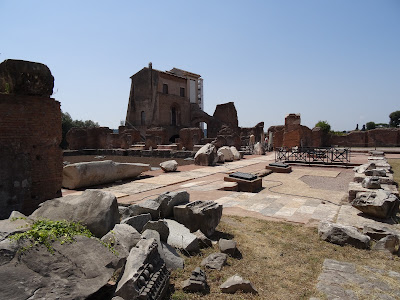







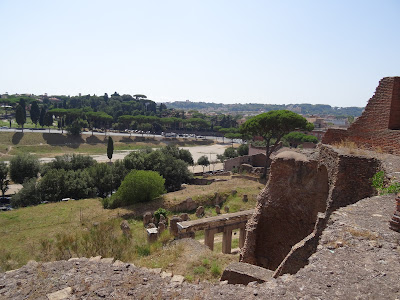


Niciun comentariu:
Trimiteți un comentariu